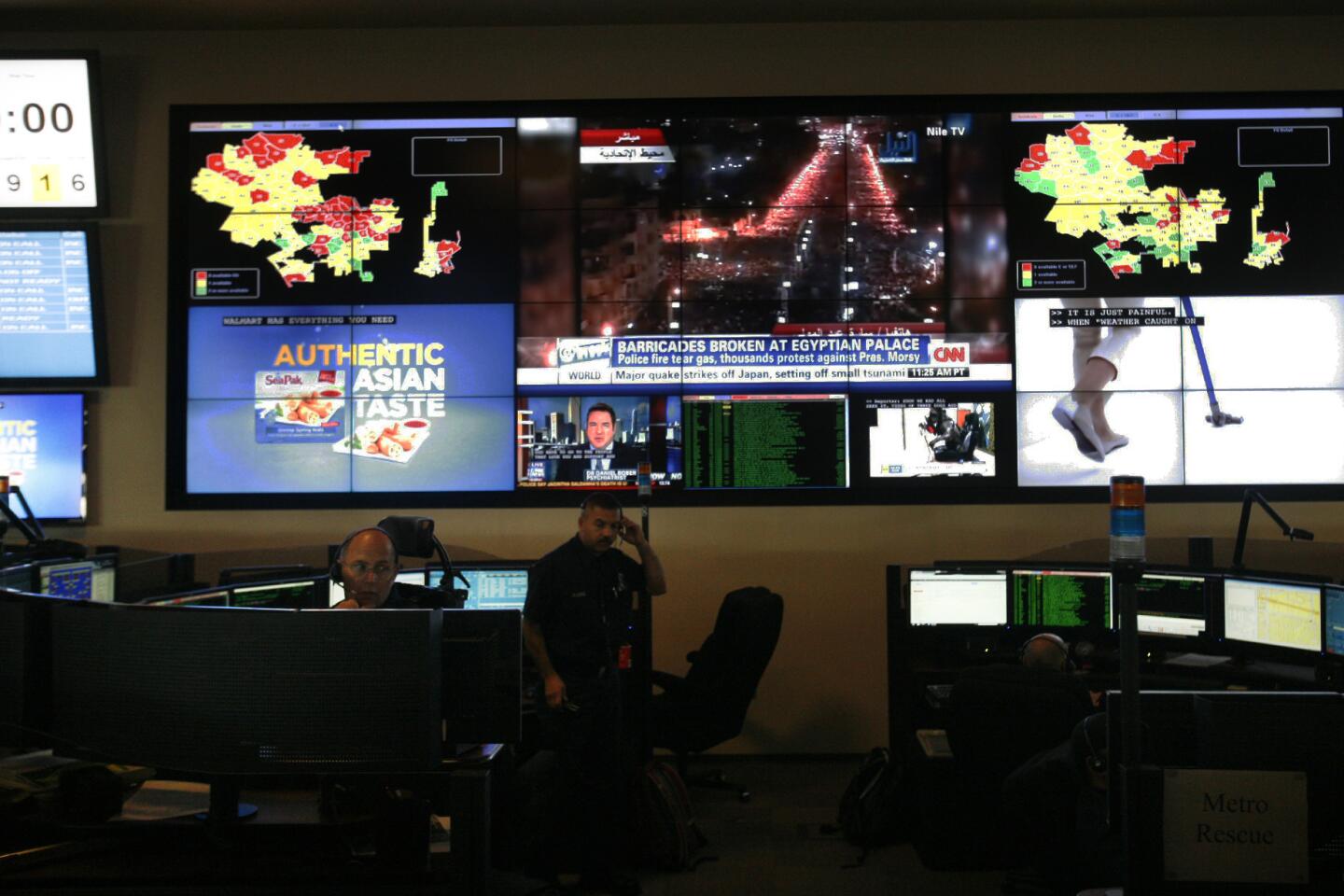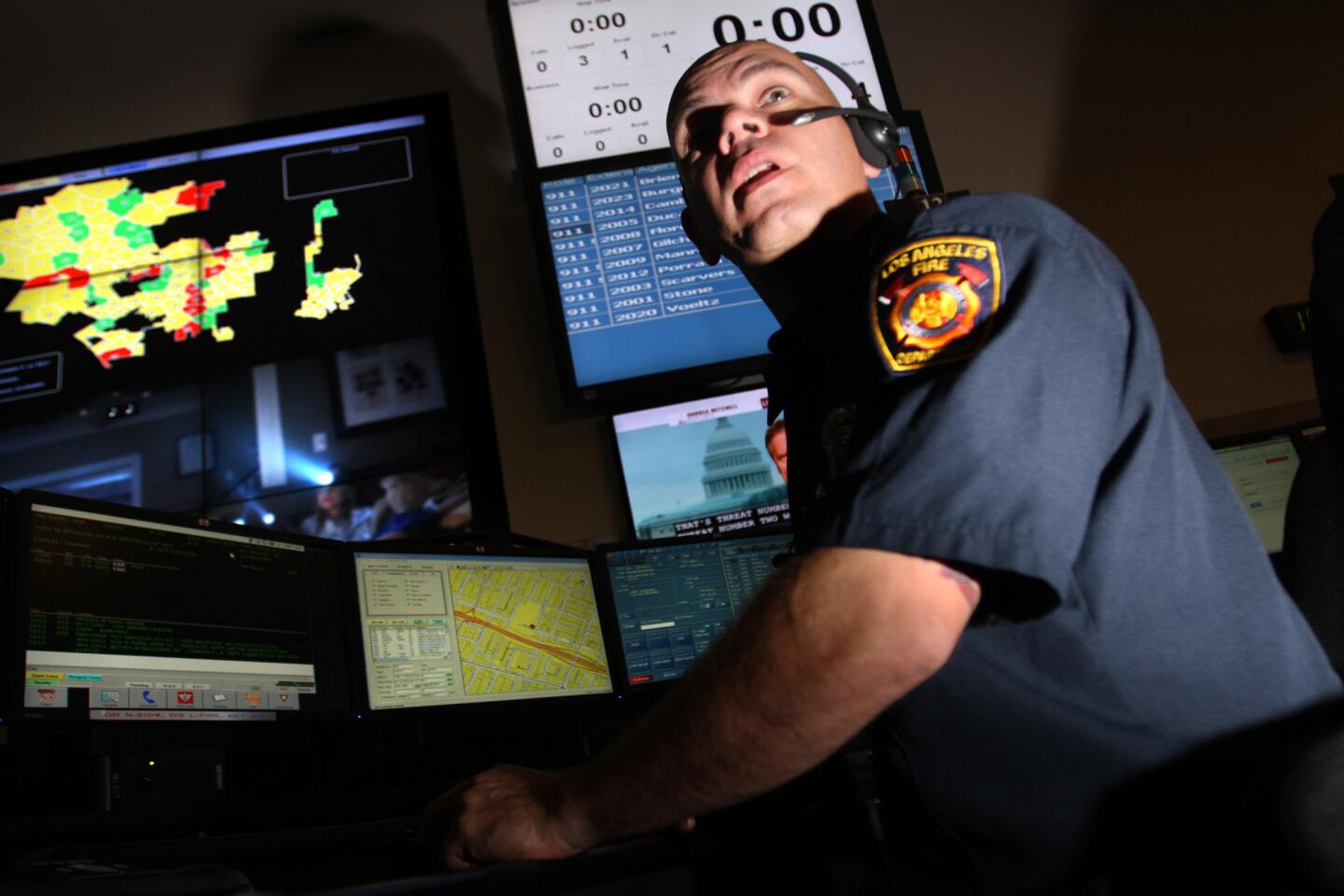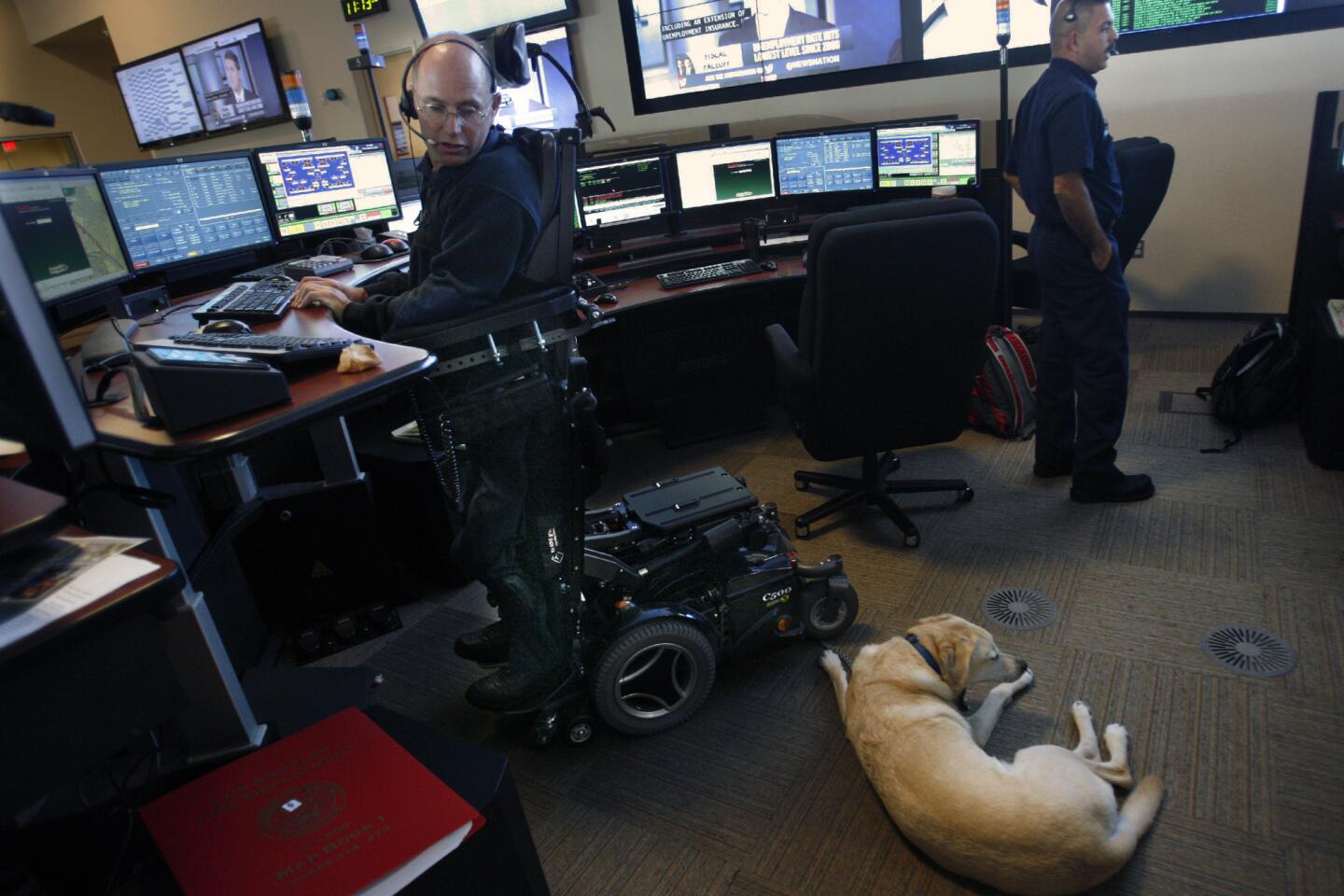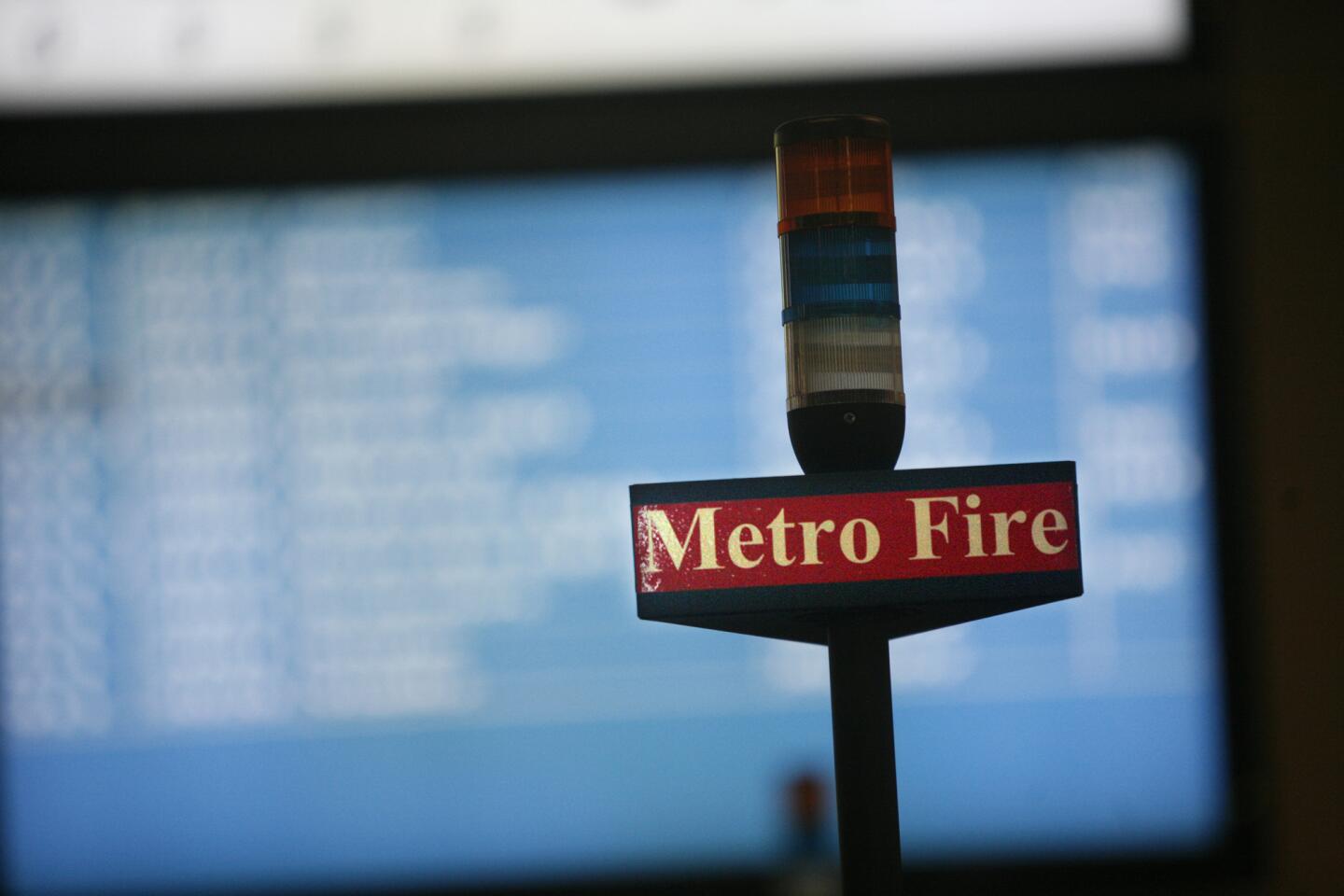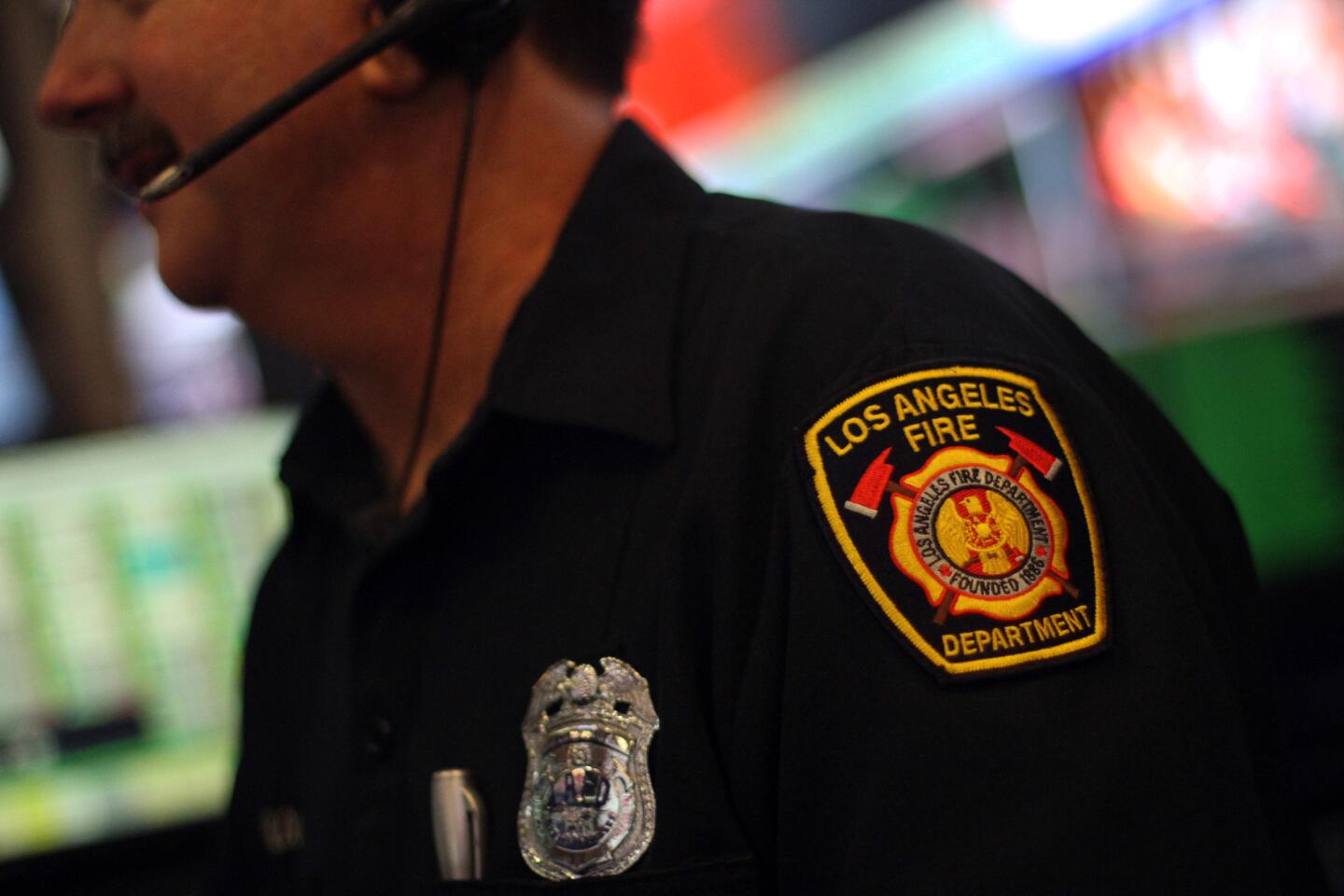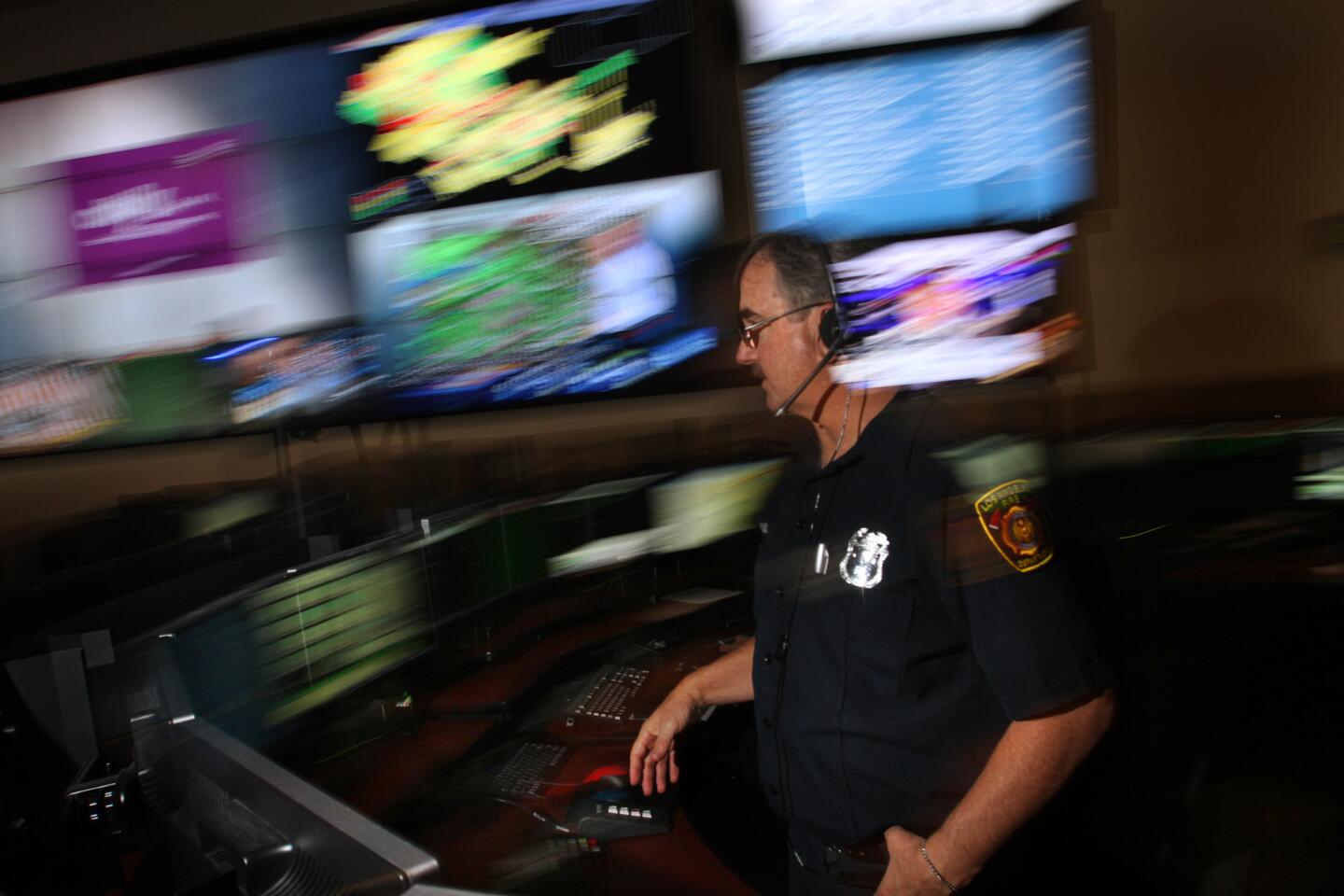L.A. seeks controversial overhaul at LAFD’s troubled 911 call center
- Share via
Los Angeles officials are pressing for a major cost-cutting change at the Fire Department’s troubled 911 call handling center despite a top commander’s warning that making the move is too risky and would jeopardize public safety.
The plan, backed by Mayor Antonio Villaraigosa, the City Council and Fire Chief Brian Cummings, would switch dispatchers from 24-hour shifts to traditional eight-hour workdays, saving an estimated $3.2 million in overtime costs each year.
The changes could reduce the number of dispatch center call takers by as much as 20% to 40% depending on the shift, according to internal department records and interviews. Villaraigosa and other key officials are scheduled to discuss the proposal behind closed doors Tuesday, and could move to implement it as early as next month.
Although many other fire agencies hire lower-paid civilians to answer 911 calls, LAFD call takers are firefighters. They make an average of $95,700 a year in base salary, and earn extra pay working 56-hour-a-week schedules. City officials say the proposed staffing overhaul is a response to a court ruling last year that made the city liable for $8 million in unpaid dispatcher overtime.
Over the years, proposals to use civilian employees at the LAFD dispatch center have faced opposition from past chiefs and union officials, who argued that firefighters had more experience and training than civilian operators.
The current proposal comes as the LAFD is under scrutiny for failing to meet national standards for processing emergency calls and suffers recurring breakdowns in its 30-year-old computerized dispatch system. Assistant Chief Daniel McCarthy, the call center commander, warned in a June report to the chief that making the staffing changes before new computer equipment is in place “would be a tragedy for those we are sworn to protect.”
A series of computer system crashes this year forced dispatchers to manually track rescuers in the field using golf tees and pegboards. In March, The Times reported that breakdowns delayed responses in four emergencies, including a South Los Angeles structure fire in which two people died.
In the event of a system failure under the new staffing plan, the department would not have enough personnel to manually dispatch units, McCarthy said in his report. In an interview, he said the city also would be more vulnerable during sudden, large-scale emergencies because a smaller crew of dispatchers would be less able to handle a surge in calls.
“It’s just a matter of time,” said McCarthy, who is overseeing development of the revised staffing plan. “It will be a disaster.”
A new Times analysis of more than 1 million LAFD 911 responses over the last five years found that spikes in calls from unexpected disasters have grown larger in recent years.
When storms, heavy winds or brush fires hit, hundreds of additional calls flood the center. On the two busiest days last year, incoming calls spiked up to 80% over normal, with dispatchers answering more than 1,600 calls, the analysis found.
Deputy Chief David Yamahata said Monday that the concerns raised in McCarthy’s report will be addressed as a final staffing plan is developed and presented to the firefighters’ union. “We are aware of his issues and we are looking into it,” said Yamahata, who oversees McCarthy and the dispatch center, and serves as the chief’s spokesman for the proposal.
LAFD dispatchers work 24-hour shifts about 10 days a month. While on the clock, they take turns answering phones, training and sleeping. The work schedule means that in the event of an emergency, 26 firefighters and three captains are quickly available to handle calls. That happened 22 times during one four-month stretch this year, largely due to computer breakdowns, according to McCarthy’s report. Yamahata said that under the new proposal, as many as 20 dispatchers would be on duty on some shifts.
Cummings is under pressure from council members and Villaraigosa to make the changes because the projected savings already are built into this year’s budget. The LAFD goes an additional $266,000 in the red each month that the staffing changes are delayed, according to City Administrative Officer Miguel Santana. Officials with the firefighters’ union say the proposal won’t save as much money as Santana says.
Villaraigosa declined to comment for this story. Councilman Mitchell Englander, who heads the council’s Public Safety Committee, said he had not read McCarthy’s report, but wanted to review it. Previously, he argued that routinely paying dispatchers overtime “is just something we simply can’t afford.”
The budget shortfall is compounding the department’s recent troubles. In the spring, officials acknowledged releasing faulty performance reports that made it appear rescuers were getting to emergencies faster than they were.
City auditors later found serious flaws with the LAFD’s data analysis and discovered that rescuers were taking longer to respond to emergencies than before recession-driven budget cuts began in 2009.
A Times analysis in May found the dispatch center falls far behind a national standard that rescue units be alerted within one minute on 90% of 911 calls. Last year, the LAFD met the one-minute standard 15% of the time, down from 38% five years ago, the analysis found.
When powerful Santa Ana winds whipped through the city on the night of Nov. 30 last year, large swaths of the Westside and part of Los Angeles International Airport went dark. The dispatch center received more than 1,000 emergency calls between 6 p.m. and 2 a.m., more than in a typical 24-hour period.
Inside the dispatch center, the first sign of a major incident is often an abrupt backlog of unanswered 911 calls, which triggers a red warning light on a large, wall-mounted screen. It can be chaotic, dispatchers say, as firefighters scramble to field calls before people hang up or get disconnected. Dispatchers must assess each emergency while toggling between five computer terminals displaying available rescue units and other data. “We’re right on the razor’s edge,” said veteran LAFD dispatcher Lauren deRosier.
Under the cost-cutting staffing plan, the department would summon firefighters from surrounding stations to help take calls in a major emergency, Yamahata said. Asked if that would work during a widespread disaster, he said: “Only time will tell.”
The new plan would move the city closer to the Los Angeles County Fire Department’s 911 operation, where dispatchers are civilians and in 2010 earned $64,000 on average with overtime. The center serves 58 cities and vast unincorporated areas with a population larger than the city of Los Angeles.
The county’s dispatcher teams rotate every 12 hours, with 15 dispatchers working during the day and 13 at night. If a call surge occurs on a weekday, five extra people with dispatching experience who do other jobs are available on site. At night and on weekends, extra dispatchers must be summoned from their homes, which can take several hours, said Chris Bundesen, the acting assistant chief in charge of the county’s dispatch center.
“The people here on the floor have to hold the line until we can call people in,” he said. “That’s a challenge.”
PHOTOS: Inside the 911 call center
FULL COVERAGE: 911 breakdowns at LAFD
MAP: How fast is LAFD where you live?
More to Read
Sign up for Essential California
The most important California stories and recommendations in your inbox every morning.
You may occasionally receive promotional content from the Los Angeles Times.
